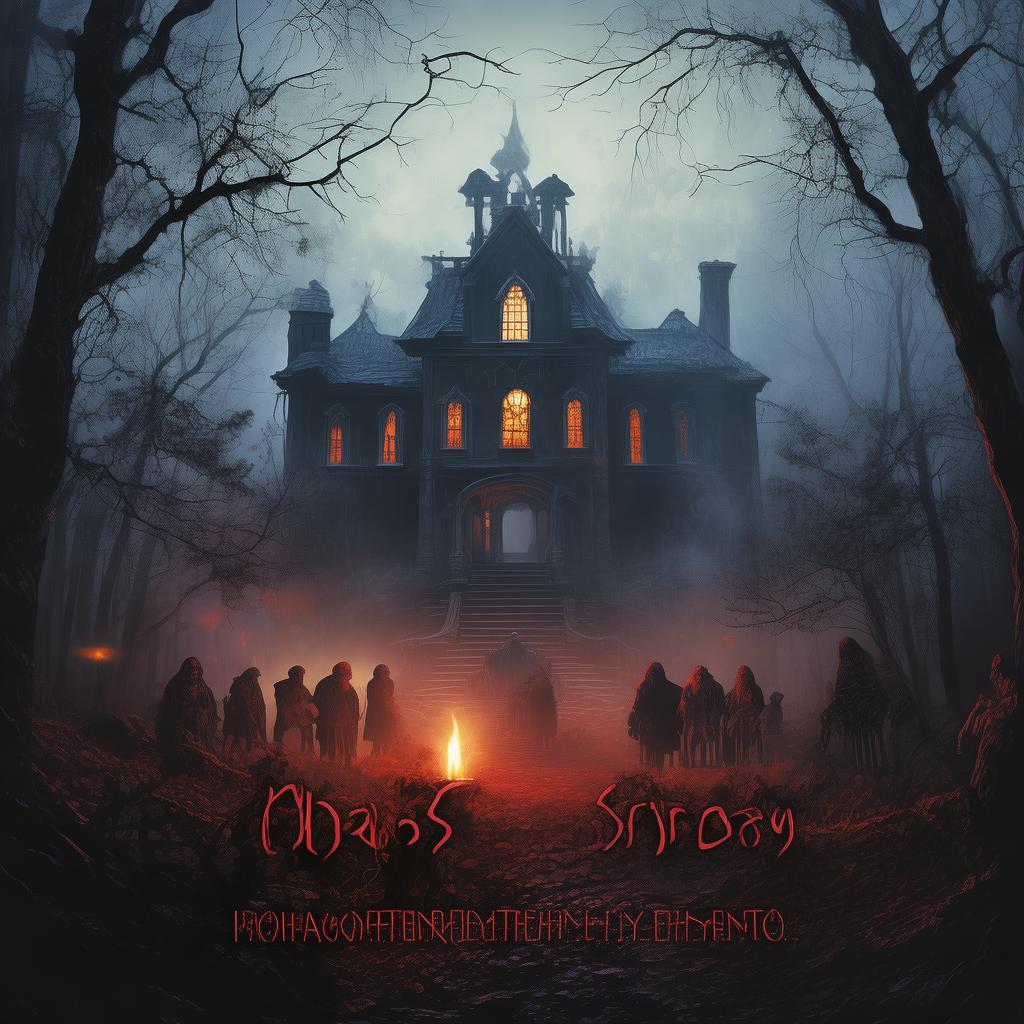The Whispering Shadows: A Haunting Legacy
In the quaint town of Eldridge, nestled between rolling hills and whispering forests, there lived an elderly artist named Mr. Harrow. His home, a grand, ivy-covered mansion, was a beacon of solitude, a place where the echoes of laughter and the scent of lilies lingered in the air. The mansion was said to be haunted, but Mr. Harrow dismissed the tales as mere superstition. His only companion was a portrait that had been in his family for generations, a painting of a woman with eyes that seemed to pierce through the canvas.
The portrait was a part of the Harrow legacy, a sinfully beautiful creation of an ancestor who had been rumored to have sold his soul for the ability to capture the essence of the woman he loved. The artist had painted her countless times, each stroke more fervent than the last, until the woman in the portrait had become almost a living being. It was said that her gaze could draw the soul from the most steadfast of hearts.
One cold autumn evening, as the leaves turned to shades of crimson and gold, Mr. Harrow lay on his deathbed, surrounded by his family. He called for his grandchild, Emily, the only one who had ever seen the portrait with the same curiosity as he had. "Take care of it," he whispered, his voice weak and tinged with fear. "It is more than just a painting, it is our legacy."
Emily, a young woman with a thirst for art and a heart full of questions, took the portrait with solemnity. She had always been drawn to the woman's eyes, which seemed to hold the secrets of the world. But as the days passed, Emily began to notice strange occurrences. The portrait would occasionally shift in the light, as if it were moving of its own accord. The air around it seemed to hum with an unseen energy.
One night, as Emily lay in bed, the room grew cold. She felt a presence, a chill that seemed to seep through her bones. She turned to see the portrait, and for a moment, it seemed to glow faintly. The woman's eyes were wide, and her lips moved as if she were whispering something. Emily strained to hear, but the words eluded her.
The following days were filled with more disturbances. Objects would move on their own, the house would creak and groan at odd hours, and Emily would often hear soft, sorrowful whispers. She began to suspect that the portrait was not just a painting, but a vessel for something much darker.
Determined to uncover the truth, Emily delved into her family's history. She discovered that her ancestor, the artist, had been deeply in love with a woman named Isabella. Isabella had been promised to another, but the artist had convinced her to run away with him. However, Isabella had betrayed him, leaving him heartbroken and vengeful. It was then that he had painted her, capturing her essence and sealing his fate to an eternal curse.

As Emily learned more, she realized that the portrait was a manifestation of the artist's sin. It was a vessel for the pain and sorrow he had bottled up for so many years. The whispers were his plea for forgiveness, his soul trapped in the canvas, forever seeking redemption.
One stormy night, the disturbances grew worse. The portrait began to burn with an inner light, and the whispers grew louder, more desperate. Emily knew that she had to break the curse, to free her ancestor's soul. She gathered her courage and approached the portrait, her heart pounding with fear and determination.
With a solemn reverence, Emily whispered the words of release that her ancestor had spoken to Isabella. The portrait's light flickered, then went out, and the whispers ceased. The house seemed to sigh with relief, and the cold that had been creeping through the walls dissipated.
The next morning, Emily found the portrait in its frame, still and silent. She knew that her ancestor's soul had finally been set free. The Harrow mansion was no longer haunted, but it had been a place of learning and healing. Emily had uncovered the truth about her family's past and had freed the spirit that had been trapped within the cursed portrait.
As she stood in the quiet house, the whispering shadows of the past seemed to fade away, leaving behind a sense of peace and closure. The Harrow legacy was no longer a burden, but a story of love, loss, and redemption. And the portrait, once a symbol of sin, had become a testament to the power of forgiveness.
✨ Original Statement ✨
All articles published on this website (including but not limited to text, images, videos, and other content) are original or authorized for reposting and are protected by relevant laws. Without the explicit written permission of this website, no individual or organization may copy, modify, repost, or use the content for commercial purposes.
If you need to quote or cooperate, please contact this site for authorization. We reserve the right to pursue legal responsibility for any unauthorized use.
Hereby declared.









